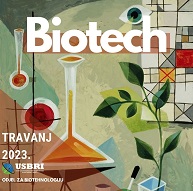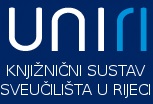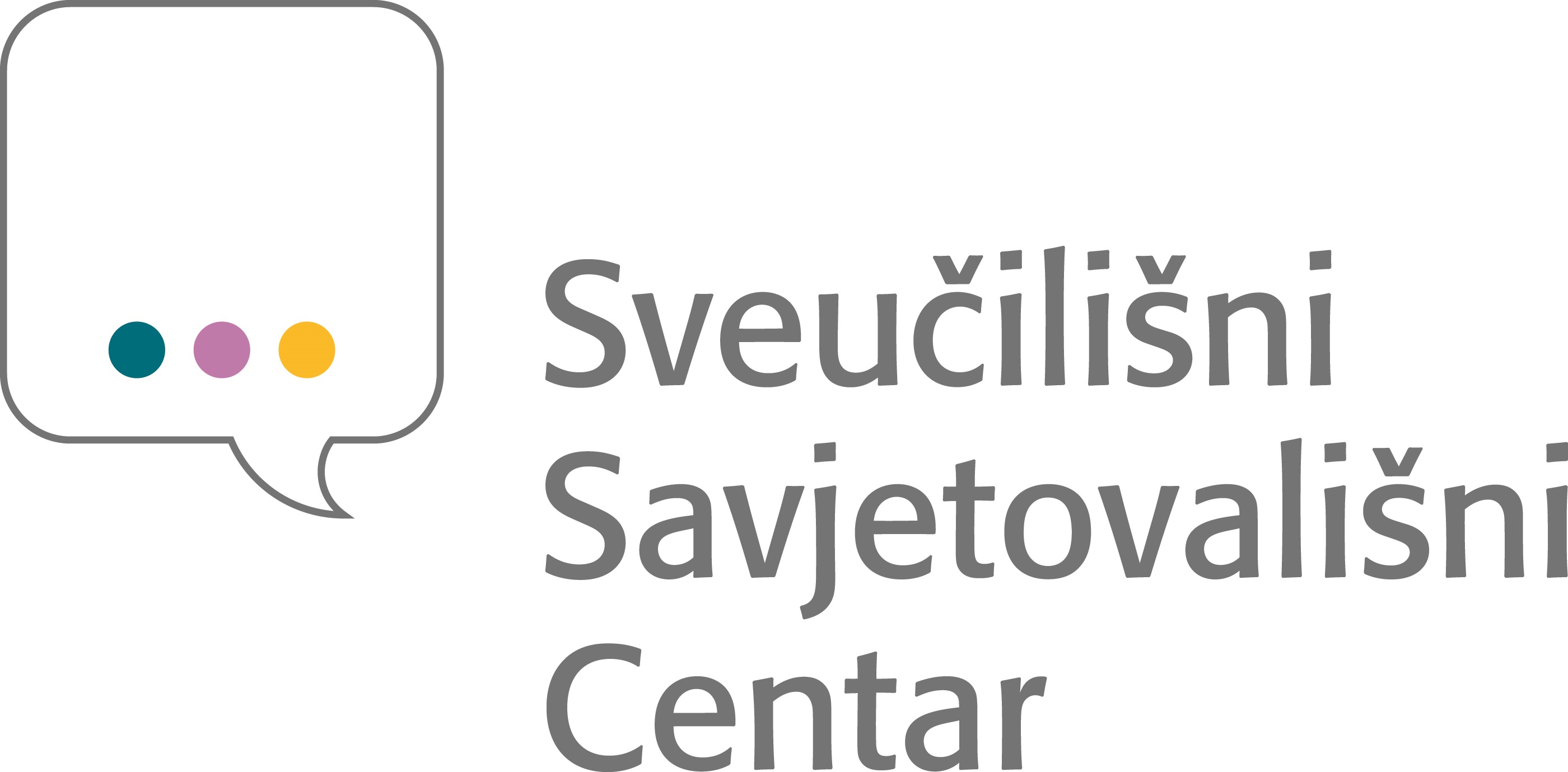Novosti iz biotehnologije
European Innovation Convention: New Commission initiatives acknowledge the essential role of biotechnology in overcoming economic crisis in Europe
EuropaBio welcomes three major announcements that were made this week during the European Commission’s first ever Innovation Convention launched by President Barroso and convened by Commissioner Geoghegan-Quinn with the aim of “bridging the gap between good ideas and bringing products to market”.
One of the highlights of the Convention was the EU Women Innovators Prize, which saw first and second place awarded to founders of biotechnology companies. Dr Fabienne Hermitte, co-founder of IPSOGEN received second prize for her work as a pioneer in personalised healthcare diagnostics, which allow more individualises treatments for cancer patients. Dr Gitte Neubauer, co-founder of CELLZOME was awarded the first prize for her ground-breaking research into chemo-proteomics and targeted medicine against inflammatory diseases and cancer.
During the event, the former Chief Scientific Advisor to the Scottish Government, Professor Anne Glover, was named as the first ever European Chief Scientific Advisor. She will provide independent scientific advice to President Barroso throughout all stages of policy development in Europe. Professor Glover holds a Personal Chair of Molecular and Cell Biology at the University of Aberdeen, and has honorary positions at the Rowett and Macaulay Institutes. This important appointment is additional proof of the Commission's commitment to ensure that responsible science and innovation dominate Europe's quest to kick start growth and respond to our most pressing societal challenges. Life science and biotechnology will continue to play a central role in ensuring that research, education and innovation lead to processes and products that are beneficial to our society and our economy now and in the future.
Moreover, the opening of the Convention was marked by the significant agreement between the European Commission and the European Investment Bank (EIB) to launch a new guarantee facility for innovative SMEs, building on the success of the Risk-Sharing Finance Facility (RSFF) launched in 2007. In signing the agreement, Commissioner Geoghegan-Quinn stated: “Investing in research and innovation carried out by SMEs means that we will have more growth, sustainability and competitiveness in Europe”. The Risk Sharing Instrument (RSI) will be managed by the European Investment Fund (EIF) and is expected to unlock a further €6 billion in loans until 2013. EuropaBio believes that it is essential that the commission continues to recognise the importance of capital intensive innovative biotech SMEs in driving economic growth by clearly differentiating between innovative and non-innovative SMEs.
Talking about the event Andrea Rappagliosi, Chair of EuropaBio’s Board Innovation Task Force stated: “As President Barroso and Commissioners Geoghegan-Quinn and Tajani clearly stressed, innovation is central to creating jobs and sustaining economic growth. Today, we are pleased to see that the strategic role of biotechnology as a key enabler for implementing the European Growth Agenda has been confirmed by the Commission awarding two biotech researchers with the top prizes for the Women Innovators Award and by the appointment of the first ever Chief Science Advisor who has a strong background in life sciences.”
Single European Patent boosts competitiveness of European Biotechnology industry
EuropaBio welcomes the formal signing by the European Union on an agreement to introduce a Unitary Patent Court for 24 participating Member States.
The introduction of the single European Patent will ensure a one door, one key protection for IP throughout cutting down on the cross-border administrative burdens that have made patenting across Europe such a burden today. Such a simplified and cost effective procedure will be of particular importance to the highly innovative biotechnology industry and in particular to its 2000+ biotechnology SMEs operating throughout the EU. Internal Market Commissioner, Michel Barnier believes that costs for Patent applicants will be reduced by a staggering 80%- bringing Europe closer in line with competing nations. The former European patent system for example was up to 60 times more expensive than in China leading to lost revenue and competitiveness for the EU.
Nathalie Moll, Secretary General of EuropaBio stated: “This is one of the longest and most eagerly awaited negotiations in the EU’s history. Biotechnology is one of the fastest-growing areas of science with continuous innovation at its core- often coming from Small and Medium Enterprises. Like many other high-tech fields, intellectual property is a key component of our sector’s growth and competitiveness in a given region of the world. The UPS will provide the one door, one key approach that European biotechnology has been waiting for to help us be more competitive in developing the science , processes and products that are needed to tackle societal challenges such as climate change, depletion of natural resources, health epidemics, population growth and ageing .”
Scientists find new gene markers for cancer risk
A huge international effort involving more than 100 institutions and genetic tests on 200,000 people has uncovered dozens of signposts in DNA that can help reveal further a person's risk for breast, ovarian or prostate cancer, scientists reported Wednesday. It's the latest mega-collaboration to learn more about the intricate mechanisms that lead to cancer. And while the headway seems significant in many ways, the potential payoff for ordinary people is mostly this: Someday there may be genetic tests that help identify women with the most to gain from mammograms, and men who could benefit most from PSA tests and prostate biopsies. And perhaps farther in the future these genetic clues might lead to new treatments."This adds another piece to the puzzle," said Harpal Kumar, chief executive of Cancer Research U.K., the charity which funded much of the research. One analysis suggests that among men whose family history gives them roughly a 20 percent lifetime risk for prostate cancer, such genetic markers could identify those whose real risk is 60 percent.The markers also could make a difference for women with BRCA gene mutations, which puts them at high risk for breast cancer. Researchers may be able to separate those whose lifetime risk exceeds 80 percent from women whose risk is about 20 to 50 percent. One doctor said that might mean some women would choose to monitor for cancer rather than taking the drastic step of having healthy breasts removed.
Scientists have found risk markers for the three diseases before, but the new trove doubles the known list, said one author, Douglas Easton of Cambridge University. The discoveries also reveal clues about the biological underpinnings of these cancers, which may pay off someday in better therapies, he said. Experts not connected with the work said it was encouraging but that more research is needed to see how useful it would be for guiding patient care. One suggested that using a gene test along with PSA testing and other factors might help determine which men have enough risk of a life-threatening prostate cancer that they should get a biopsy. Many prostate cancers found early are slow-growing and won't be fatal, but there is no way to differentiate and many men have surgery they may not need. Easton said the prospects for a genetic test are greater for prostate and breast cancer than ovarian cancer. Breast cancer is the most common malignancy among women worldwide, with more than 1 million new cases a year. Prostate cancer is the second most common cancer in men after lung cancer, with about 900,000 new cases every year. Ovarian cancer accounts for about 4 percent of all cancers diagnosed in women, causing about 225,000 cases worldwide. The new results were released in 13 reports in Nature Genetics, PLOS Genetics and other journals. They come from a collaboration involving more than 130 institutions in the United States, Europe, and elsewhere. The research was mainly paid for by Cancer Research U.K., the European Union and the U.S. National Institutes of Health.Scientists used scans of DNA from more than 200,000 people to seek the markers, tiny variations in the 3 billion "letters" of the DNA code that are associated with disease risk.The scientists found 49 new risk markers for breast cancer plus a couple of others that modify breast cancer risk from rare mutated genes, 26 for prostate cancer and eight for ovarian cancer. Individually, each marker has only a slight impact on risk estimation, too small to be useful on its own, Easton said. They would be combined and added to previously known markers to help reveal a person's risk, he said. A genetic test could be useful in identifying people who should get mammography or PSA testing, said Hilary Burton, director of the PHG Foundation, a genomics think-tank in Cambridge, England. A mathematical analysis done by her group found that under certain assumptions, a gene test using all known markers could reduce the number of mammograms and PSA tests by around 20 percent, with only a small cost in cancer cases missed (AP Maria Cheng).
Huge study: 5 mental disorders share genetic links
The largest genetic study of mental illnesses to date finds five major disorders may not look much alike but they share some gene-based risks. The surprising discovery comes in the quest to unravel what causes psychiatric disorders and how to better diagnose and treat them. The disorders — autism, attention deficit-hyperactivity disorder or ADHD, bipolar disorder, major depressive disorder and schizophrenia — are considered distinct problems. But findings published online Wednesday suggest they're related in some way. "These disorders that we thought of as quite different may not have such sharp boundaries," said Dr. Jordan Smoller of Massachusetts General Hospital, one of the lead researchers for the international study appearing in The Lancet. That has implications for learning how to diagnose mental illnesses with the same precision that physical illnesses are diagnosed, said Dr. Bruce Cuthbert of the National Institute on Mental Health, which funded the research.Consider: Just because someone has chest pain doesn't mean it's a heart attack; doctors have a variety of tests to find out. But there's no blood test for schizophrenia or other mental illnesses. Instead, doctors rely on symptoms agreed upon by experts. Learning the genetic underpinnings of mental illnesses is part of one day knowing if someone's symptoms really are schizophrenia and not something a bit different. "If we really want to diagnose and treat people effectively, we have to get to these more fine-grained understandings of what's actually going wrong biologically," Cuthbert explained. Added Mass General's Smoller: "We are still in the early stages of understanding what are the causes of mental illnesses, so these are clues." The Psychiatric Genomics Consortium, a collaboration of researchers in 19 countries, analyzed the genomes of more than 61,000 people, some with one of the five disorders and some without. They found four regions of the genetic code where variation was linked to all five disorders. Of particular interest are disruptions in two specific genes that regulate the flow of calcium in brain cells, key to how neurons signal each other. That suggests that this change in a basic brain function could be one early pathway that leaves someone vulnerable to developing these disorders, depending on what else goes wrong. For patients and their families, the research offers no immediate benefit. These disorders are thought to be caused by a complex mix of numerous genes and other risk factors that range from exposures in the womb to the experiences of daily life. "There may be many paths to each of these illnesses," Smoller cautioned.But the study offers a lead in the hunt for psychiatric treatments, said NIMH's Cuthbert. Drugs that affect calcium channels in other parts of the body are used for such conditions as high blood pressure, and scientists could explore whether they'd be useful for psychiatric disorders as well. The findings make sense, as there is some overlap in the symptoms of the different disorders, he said. People with schizophrenia can have some of the same social withdrawal that's so characteristic of autism, for example. Nor is it uncommon for people to be affected by more than one psychiatric disorder (AP).
Record area of biotech crops used in 2012 - report
Developing countries accounted for the first time last year for more than half the global biotech crop area, though the United States remains the primary nation making use of genetically altered crops, according to an industry report. "The developments we will see over the next five years will be in favor of developing countries. That is where the mouths are that we have to feed," said Clive James, chairman of the International Service for the Acquisition of Agri-Biotech Applications (ISAAA), which issued the report. ISAAA is a pro-biotech industry organization and annually releases a survey of biotech crop plantings around the world. Monsanto Co., DuPont, Syngenta and other global chemical and seed companies have over the last decade and a half rolled out a variety of genetic traits for agricultural seeds. The most popular genetically modified (GM) traits alter crops like corn, soybeans and cotton so that they can be sprayed with weed killer and still thrive, or resist damaging pests. Many new types of biotech crops have "stacked traits," or multiple enhancements. The seeds are generally much more costly than conventional seeds, but are marketed as helping boost productivity. Critics say biotech crops lead to increased pesticide use and environmental damage and have not been proven safe for human and animal consumption, but backers say the crops are no different to normal crops. ISAAA's report issued Tuesday showed a record 170.3 million hectares of biotech crops were grown around the world last year, up 10.3 million hectares from 2011. The number of farmers using biotech crops also rose to 17.3 million, up 600,000 from 2011, the report said. And for the first time, thanks to Brazil's appetite for biotech corn and soybeans, developing countries accounted for more than half of the global biotech crop area, 52 percent, while industrial countries accounted for 48 percent. In Brazil, biotech crops were planted on 36.6 million hectares in 2012, up 6.3 million hectares from 2011, and approximately 21 percent of the global total. U.S. farmers continued to be the chief users of biotech crops, however, planting 69.5 million hectares in 2012, up from 69 million in 2011, and roughly 41 percent of the global total. Argentina planted 23.9 million hectares, or 14 percent of the global total area last year, and Canada had 11.6 million hectares planted to biotech crops, or 7 percent of the global total.
Sudan planted biotech crops for the first time last year, sowing about 20,000 hectares of biotech Bt cotton, making it the fourth country in Africa, after South Africa, Burkina Faso and Egypt, to commercialize a biotech crop. Cuba also planted biotech crops for the first time as farmers there seeded 3,000 hectares of hybrid biotech maize. Not all countries where farmers have been trying biotech crops were expanding their use. Colombia grew 28,172 hectares of biotech cotton in 2012, down from 49,333 hectares in 2011. Also, Romania, which planted more than 7,000 hectares of Bt cotton in 2008, planted only 217 hectares in 2012. Prior to its entrance into the European Union, Romania planted more than 100,000 hectares of biotech crops, the report said. And Egypt planted 1,000 hectares of BT maize in 2012, down from 2,800 hectares in 2011. The European Union continued to be a difficult market for biotech crop expansion efforts. Though five EU countries planted Monsanto's biotech maize in 2012, BASF ceased commercial operations for biotech crops in the EU last year citing market resistance. "The EU region is particularly difficult to predict because the issues are not related to science and technology considerations but are of a political nature and influenced by ideological views of activist groups," the ISAAA report states. The three-year outlook for biotech crops globally was "cautiously optimistic", the report said. Biotech sugarcane is seen as likely to be available in the near term and enhanced Vitamin A rice, transfat-free soybeans and omega-3 rich soybeans are seen becoming prevalent, ISAAA said. The world's first biotech wheat is also expected by 2020, the group said (Reuters).
Kontakt
Radmile Matejčić 2
51000 Rijeka
Tel. +385 51 584 550
ured@biotech.uniri.hr
OIB: 64218323816
IBAN: HR3724020061400006958
Radmile Matejčić 2, O-047
http://studentska.uniri.hr/
Nadležna studentska liječnica:
dr. sc. Marijana Turčić, dr. med. spec. školske medicine
Radmile Matejčić 5, Rijeka
051/584 875 / 876
e-mail:
skolska.kampus@zzjzpgz.hr













.png)




